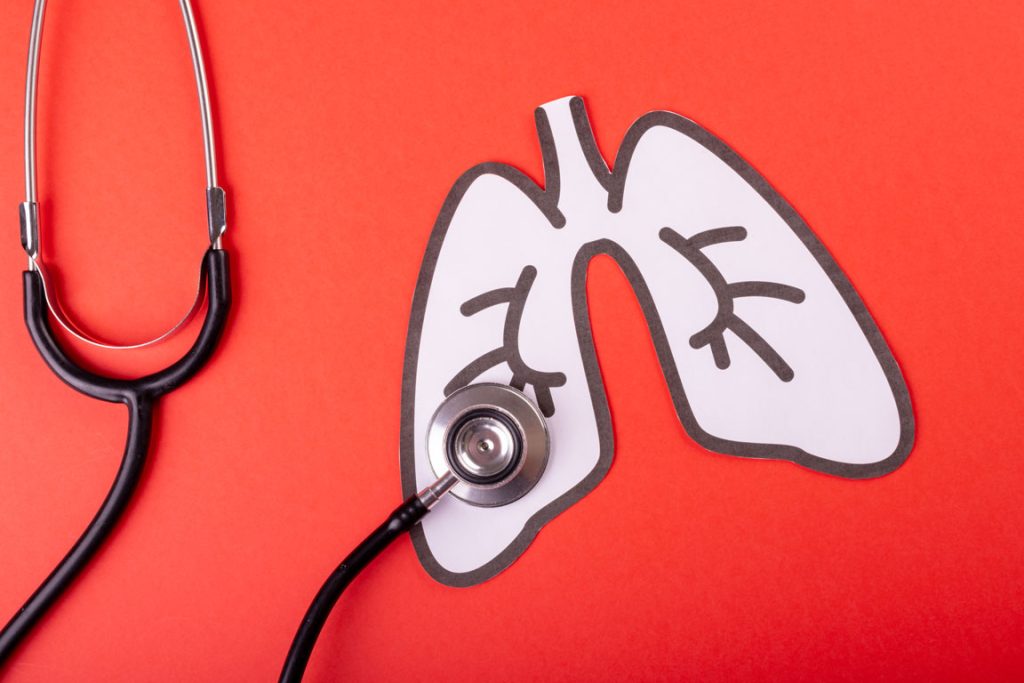Created to spread awareness about how to keep your lungs functioning at their full capacity, Healthy Lung Month encourages individuals to adopt healthier habits, improving respiratory health across all age groups. This post provides information on the lungs along with some helpful tips.
Your Respiratory System
Your lungs are on each side of your heart, inside your chest cavity. They are the main organs of the respiratory system. The right lung is divided into three lobes (sections), and the left lung is divided into two lobes. Your left lung is slightly smaller than your right lung, since your heart takes up some space on the left side. When you breathe in, air enters your airways and travels down into the air sacs, or alveoli, in your lungs. This is where gas exchange takes place.
The circulatory system, which is made up of the heart and blood vessels, supports the respiratory system by bringing blood to and from the lungs. The circulatory system helps deliver nutrients and oxygen from the lungs to tissues and organs throughout the body. It also helps remove carbon dioxide and waste products. Other body systems that work with the respiratory system include the nervous system, lymphatic system, and immune system.
Airways
The airways are pipes that carry oxygen-rich air to the alveoli in your lungs. They also carry the waste gas carbon dioxide out of your lungs. The airways include these body parts:
- Mouth
- Nose and linked air passages called the nasal cavity and sinuses
- Larynx (voice box)
- Trachea (windpipe)
- Tubes called bronchial tubes , or bronchi, and their branches
- Smaller tubes called bronchioles that branch off of the bronchial tubes


How Can I Keep My Lungs Healthy?
- Quit smoking or don’t start. For free help and support to quit smoking, you may call the National Cancer Institute’s Smoking Quitline at 1-877-44U-QUIT (1-877-448-7848).
- Avoid secondhand tobacco smoke by staying away from places where smoking is allowed. Ask friends and family members who smoke not to do it in the house or the car.
- Aim for a healthy weight. Unhealthy eating patterns and lack of physical activity can lead to overweight and obesity, which can lead to sleep apnea. Research has shown that losing weight can reduce sleep apnea in people who have also been diagnosed with obesity.
- Be physically active. Physical activity can help strengthen your heart and lungs so they work more efficiently. Physical activity may also reduce your risk of lung injury or disease.
- Limit exposure to outdoor air pollution by checking the Air Quality Index before taking part in outdoor activities. Also, avoid heavy traffic when possible.
- Reduce indoor air pollution by making sure that the places where you live and work are well ventilated and cleaned regularly to prevent the buildup of allergens, dust, and mold. You can also remove products that create fumes, such as strong cleaning fluids and aerosols. Avoid burning solid fuels such as wood for heating and cooking.
- Take precautions against seasonal flu and pneumonia. Get a flu shot every year. You may also want to ask your healthcare provider about the pneumonia vaccine.
- Test your home for radon gas. Radon is a colorless, tasteless, and odorless gas that forms naturally. It can enter buildings through cracks in the wall and can cause lung cancer. Inexpensive testing kits are available from many hardware stores. If radon levels in your house are hazardous, take the recommended steps to reduce them. If you’re in an apartment, alert the property owners so they can fix it.
- Use protective gear if you work in an industry that involves exposure to dust, silica, allergens, chemical fumes, or other indoor or outdoor air pollution.
–NIH
